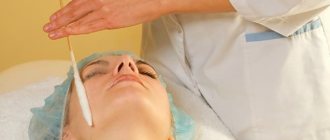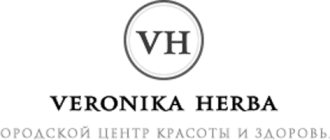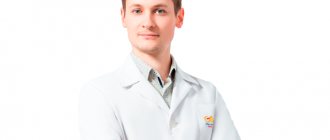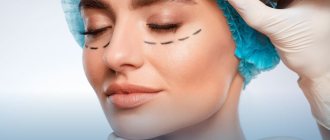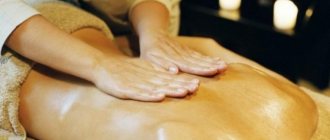14 September
2020
Cold can bring not only illnesses, but also benefits, relief from a number of ailments. Cold techniques are widely used in medicine; there is even a separate branch – cryotherapy. It seems to be of ancient Greek origin, meaning “cold treatment.” The essence of the procedure is the effect of low temperatures on the human body for the purpose of healing, restoration, and maintaining tone.
To achieve the desired result and not harm the body, it is necessary to correctly use the source and cold for a strictly limited time. Cryotherapy at the Alfa Radon sanatorium is carried out by experienced specialists who specialize in this medical field. Therefore, treatment with cold methods is effective and safe.
Areas of application of cryotherapy
- Surgery: treatment of burns and incised wounds, erysipelas, bedsores and ulcers.
- Neurology: therapy of migraines, spastic hemiparesis, paraparesis, acute vertebrogenic pain syndrome, multiple sclerosis.
- Traumatology, orthopedics: therapy of tendons, ligaments, contractures, pathologies of soft and bone tissues, joints.
- Rheumatology: treatment of arthrosis, rheumatism, arthritis.
- Cosmetology, dermatology: treatment of skin diseases, scars, pigmentation, etc.
Due to its effectiveness (increasing elasticity and skin tone), cryotherapy remains the most popular procedure in cosmetology.
What diseases does cryotherapy treat?
In addition to cosmetology, cryotherapy is also actively used in medicine: with the help of cold exposure, you can normalize blood circulation, improve metabolism and improve the health of the body as a whole, and increase immunity.
Cryotherapy can be prescribed for postoperative or post-traumatic rehabilitation, for the treatment of inflammatory diseases of the joints and bones, for diseases of the musculoskeletal system, skin diseases, and diseases of the respiratory system.
Cryotherapy for diseases of the ENT organs
Most often, cryotherapy is prescribed for chronic diseases of the respiratory system: rhinitis (especially allergic rhinitis), tonsillitis and pharyngitis, helping to relieve soreness and dryness, and stage 1-2 adenoids. Cryotherapy is also used in cases where traditional drug treatment does not produce effective results. In addition, cryotherapy activates the immune system, which is very important if you are prone to colds. With cryotherapy, blood microcirculation improves, regeneration of damaged tissue increases, and swelling is relieved.
The procedure is usually performed on an outpatient basis, under local anesthesia with lidocaine. Using a special device, the doctor applies liquid nitrogen to the pathological focus without affecting healthy tissue. In case of purulent discharge from the lacunae of the tonsils, treatment and rinsing with antiseptics is necessary before cryotherapy, after which you can begin the procedure itself.
Only an otolaryngologist can prescribe a cryotherapy procedure and only in the absence of contraindications, for example, pregnancy, acute respiratory viral infection, or furunculosis.
Azalia ShayakhmetovaDermatovenerologist, cosmetologist
Cryotherapy for skin diseases
Cryotherapy is especially effective in the treatment of skin diseases such as various dermatitis, psoriasis, acne and post-acne. Exposure to liquid nitrogen relieves rashes and irritation, reduces itching, and reduces the area of skin damage. By improving blood circulation and increasing immunity, skin cells regenerate faster and healing occurs faster. For extensive manifestations of the skin disease, a cryosauna is usually prescribed. If cold exposure is necessary on individual areas, for example when treating acne on the face, then liquid nitrogen is applied locally.
— A properly selected course of local cryotherapy significantly improves skin healing, increases tone, improves blood supply and skin nutrition. It is also very effective during post-traumatic and post-operative recovery,” says the dermatologist.
Cryotherapy for diseases of the musculoskeletal system
Cold is useful in the treatment of diseases and injuries of the musculoskeletal system, spine, for example, arthritis and osteochondrosis, as well as inflammatory processes in the joints, for example, arthrosis of the knee joint.
Cryotherapy is one of the most effective procedures in the treatment of bone and joint pathologies. It increases blood circulation, eliminates muscle spasms, improves the elasticity of muscles and ligaments, reduces inflammation and has a powerful analgesic effect.
Azalia ShayakhmetovaDermatovenerologist, cosmetologist
In modern physiotherapy, various technologies for performing cold procedures are used: synthetic cryonics, massage with ice cubes, ice applications, cold bandages and bandages, local baths and cryogenic installations, etc. The procedure has few contraindications: Raynaud's disease, peripheral circulatory disorders, individual intolerance to cold and general contraindications to physiotherapy.
Types of cold treatment
There are two types of cryotherapy: general and local.
The general procedure is carried out for 3 minutes in a cryochamber, where the surface of the skin is cooled to 0 0C with a mixture of carbon dioxide and nitrogen -100... -140 0C. Thus exposed to temperature stress, the body triggers a “mechanism” to stimulate protective functions and metabolic processes. The skin is not damaged.
Local cryotherapy involves cooling a small area of skin immersed in a gas environment with a temperature of -110... -160 0C. It is recommended to carry out the procedure by warming your hands and feet with woolen mittens and socks to avoid frostbite of the limbs and respiratory organs and using a cotton-gauze bandage.
There are non-hardware and hardware local cryotherapy. When performing non-hardware cryotherapy
synthetic cryopacks or ice are used. These refrigerants have different temperatures: ice - from -10 to -7 0C, cryopacks - up to -20 0C. In this regard, the time for massage or applications with ice cubes and cryopaks is different: 30 and 10-20 minutes, respectively. Cryopacks are applied through a napkin due to their critically low temperature.
Hardware cryotherapy
is carried out using special installations through which a stream of cooling gas or dried cold air is supplied to a certain area of the skin surface. Their temperature (up to -180 0C) is extreme for the body, so the time of such temperature effects is equal to several seconds.
How is the cryomassage process carried out?
To carry out the cryomassage procedure without any problems, you need knowledge in the field of chemistry and physics. When the temperature drops to -1960C, nitrogen turns into a transparent liquid with a density slightly lower than water, and there is no odor. In this state, it is placed in a special vessel like a thermos.
Only a highly qualified cosmetologist should apply liquid nitrogen to human skin, using a cotton swab wound on a wooden stick. This substance is applied strictly in accordance with the massage lines to avoid unnecessary stretching of the facial skin.
If there are problem areas on the skin (this could be pigment spots, scars, the effects of acne and acne, wrinkles), nitrogen is applied directly to these areas. Due to the increased rate of evaporation of this liquid, it is necessary to carry out cryomassage with liquid nitrogen as quickly as possible.
Number of required cryotherapy sessions
The entire procedure takes about 10 minutes, but usually it needs to be done several times to enhance the effect. Visible changes will become possible after a series of sessions; in order to completely complete the process of skin regeneration and consolidate the effect for a long time, you need to visit a cosmetologist 10 or 15 times. To do this, the client must visit the beauty salon 2 or 3 times a week.
To achieve the maximum effect of rejuvenation and skin tightening, it is necessary to repeat the cryomassage procedure using liquid nitrogen 2 times a year. If the skin situation worsens (acne or increased pigmentation), this method should be used as often as possible.
Hardware air cryotherapy (VAC) at GUTA CLINIC
VCT in our clinic is performed using the CryoJet S600 unit (Germany), which supplies any part of the body with an adjustable air stream, dried and cooled to a temperature of –60… –30 0C.
The use of CryoJet S600, a cryotherapeutic system of the latest generation, in local VCT provides the following therapeutic effects:
- inflammation is relieved;
- spasms and pain are eliminated;
- muscle tone is regulated;
- metabolism is activated;
- microcirculation is restored;
- cellular and humoral immunity is activated.
Temperature regulation systems of the human body and cryotherapy effectors
1. The human body and cold The body adapts better to heat than to cold. However, it does have mechanisms to combat the effects of cold. During exposure to cold, vasoconstriction occurs in the body: this removes blood from the skin, since the aggressiveness of the cold acts externally. This way the body retains heat and maintains a constant internal temperature. This change in blood flow occurs partly due to the indirect effect of cold on the skin vessels, partly due to the central regulation of temperature (thermoregulation), which changes the sensory tone of the skin blood vessels. As the temperature decreases, the sensitivity of the tone increases, and the blood vessels narrow. 2. Thermoregulation Thermoregulation ensures that the core body temperature is maintained at a relatively constant level during rest or work. A similar regulatory mechanism operates in all the main elements described below. 2.1. Temperature Receptors These central or peripheral receptors respond to heat or cold. They are connected to the cerebral cortex, as well as to regulatory centers located in the hypothalamic center, through nerve fibers. Receptors of the hypothalamic center respond to minimal temperature deviations (0.1 to 0.2 °C) in the flow of arterial blood. 2.2. Temperature effectors Temperature effectors respond to stimulation coming from receptors and produce regulatory changes. These temperature effectors are skeletal muscles, skin arterioles, sweat glands, and some endocrine glands. 2.3. Hypothalamic center The hypothalamic center is located in the hypothalamus and coordinates information received from receptors with the regulatory action of effector organs. The sensitivity threshold for temperature changes is very low (between 0.1 - 0.2°C).
Physiological reactions to a decrease in skin temperature depend on the frequency, time of exposure, and the magnitude of the temperature decrease. 1. Vasomotor (vasoconstrictor) effects Local exposure to cold causes a noticeable vasoconstriction due to dual local and reflex action. It is often used, for example, to prevent post-traumatic bleeding. If the exposure is prolonged, the reaction is hyperemia, as a protective mechanism of the tissues. However, the same reaction appears along with the breakdown of proteins or the precipitation of cryoglobulin when there is a significant temperature difference (a decrease in skin temperature by 10 -15 ° C). In this case, the advantage of cryotherapy becomes noticeable, since the supplied cold air at a temperature of -30°C is able to lower the skin temperature by more than 20°C, but at the same time it causes only a weak reactive hyperemia due to the short duration of the effect, as is customary with cryotherapy . Vasoconstriction also helps reduce swelling, and therefore inflammatory reactions. At the same time, the physiological mechanisms of tissues are weakened; for example, cellular activity decreases (skin tissue, synovial tissue, leukocytes, etc.). Also, among other things, enzymatic and proteolytic (protein-breaking) activity decreases. By reducing metabolism, exposure to cold leads to a decrease in inflammatory activity, minimizing the negative effects of oxygen starvation of tissues (for example, with burns). However, this effect should not be long-term, since the same mechanism will then lead to inhibition of tissue healing. 2. Sensory-motor effect A decrease in skin temperature when exposed to cold leads to a decrease in nerve conduction velocity (it freezes at a temperature of about 5°C). Unmyelinated and small-diameter myelinated fibers are affected first. The analgesic effect of cold, as well as a decrease in conduction velocity in the fibers, occurs there before the motor neurons are exposed. 3. Effect on tone Cold affects many components of the sensory-motor complex associated with muscle tone, causing, for example, a decrease in nerve conduction velocity, a decrease in the excitability of the neuromuscular spindle and tendon bodies (manifested with a minimum decrease in temperature to 32 ° C ), as well as a decrease in neuromuscular transmission or even its freezing (at a temperature of about 5°C). In addition, an increase in muscle fibers and joint elements, viscosity leads to a decrease in muscle tone. This increase affects reflex reactions by changing the relaxation time of muscle fibers. A decrease in muscle tone is achieved in part by suppressing the muscle feeling reflex, which can be used in the treatment of spasticity.
Advantages of hardware VKT
Carrying out VCT has undeniable advantages over other methods of cryotherapy:
- Environmental friendliness (ordinary atmospheric air acts as a cooling medium).
- Safety (short-term exposure to cold eliminates the threat of frostbite and complications).
- Versatility (wide range of therapeutic applications: rheumatology, neurology, orthopedics, surgery, dermatology, cosmetology, sports medicine).
- There is no need for preliminary preparation for the procedure and subsequent rehabilitation.
Indications and contraindications for the procedure
Cryotherapy can be prescribed for the following diseases:
- arthritis, joint diseases;
- osteochondrosis;
- ankylosing spondylitis (ankylosing spondylitis);
- arterial hypertension;
- metabolic disorders;
- burns;
- trophic wounds and ulcers;
- acute pancreatitis;
- osteoarthritis;
- cardiac ischemia;
- dermatological diseases (psoriasis, eczema, acne, seborrhea, neurodermatitis, etc.);
- chronic insomnia.
In addition, cryotherapy has a curative effect for ENT diseases, gynecological problems, and is used to accelerate the healing of bruises and abrasions.
Absolute contraindications to the procedure are:
- acute diseases of internal organs,
- peripheral vessels (varicose veins, obliterating endarteritis, thromboembolism, etc.),
- allergy to cold,
- anemia
- pregnancy,
- children under 5 years old.
Relative contraindications:
- chronic local infections,
- blood diseases in the acute stage,
- claustrophobia (for general cryotherapy),
- acute infectious diseases.
Contraindications for VCT
- General contraindications to physiotherapy.
- Raynaud's disease.
- Obliterating endarteritis.
- Sickle cell anemia.
- Hypersensitivity to cold.
Research into the effects of low-temperature cold on the body will always continue, so don’t wait for scientists to make a grand discovery on this topic and offer a new method of cold treatment. If you have no contraindications to cryotherapy, nothing prevents you from using this procedure now and making sure of its effectiveness.
Reviews from experts about cryotherapy
— Cryotherapy is a unique procedure where, with the help of cold, you can fight such common problems as hair loss, seborrheic dermatitis, acne, facial swelling, some forms of atopic dermatitis and psoriasis, and even demodicosis, which is especially difficult to treat. After cryomassage, the firmness and elasticity of the skin actually increases, its color and structure improve, dark circles under the eyes disappear, the rejuvenating effect is very noticeable due to the acceleration of metabolic processes in cells and the immunostimulating effect of cryotherapy, emphasizes dermatovenerologist and cosmetologist Azalia Shayakhmetova.
Indications for cryotherapy
Facial cryotherapy can be prescribed to both women and men of any age.
Treatment with liquid nitrogen is carried out if the following indications exist:
- The appearance of age-related signs of skin aging (sagging, swelling, sagging, wrinkles);
- Poor blood circulation and anemic skin on the face;
- The presence of enlarged pores;
- Increased sebum secretion;
- Rosacea (rosacea);
- Acne (acne);
- Cicatricial changes and scars;
- The appearance of papillomas, warts and other growths on the face;
- Preparation for various cosmetic procedures (peeling, massage, facial cleansing).
Expected Result
Cryotherapy has many advantages - it is painless, can rejuvenate the skin, remove blemishes, fight cellulite, and helps lose weight. This occurs due to the activation of internal metabolic processes, and not drugs. Cold treatments are highly effective and show results from the first sessions.
It is important to choose a clinic where competent specialists will help the body, with the help of cold, learn to adapt to unfavorable conditions and stress. Cryotherapy must be done in a course for greater effectiveness.
This is an inexpensive way to maintain health. Cryotherapy is a reliable prevention of many diseases. The price depends on the clinic and city; currently such services are provided not only in Moscow, but also in many large cities of Russia.
Combination with other procedures
As we have already written, cryotherapy can be carried out as an independent procedure (in addition to the cryomassage itself, it also includes preliminary cleansing of the skin with milk and final care). However, greater results can be achieved by combining it with other facial care programs.
At the EFI Beauty House, cryotherapy is already included in skin cleansing procedures, anti-aging treatments (for example, Secret Age) and multifaceted programs: Satin Skin, Festive Face. In addition, a cosmetologist can create an individual procedure, including cryotherapy. Moreover, this can be either express care (for example, cryo + mask + massage) or a more intense program.
Cryotherapy to eliminate acne and its consequences
Cryotherapy is one of the best solutions for treating pimples, acne, blackheads, comedones and other skin problems. It can be done as an independent procedure (if you are ready to take the full course, and also if specific problems can be solved with the help of cryo), and included in treatments/cleansings. The second option will allow you to take a more comprehensive approach to the problem and eliminate it faster. In EFI, for example, cryotherapy is already included in such comprehensive programs as Clean Skin.
The combination of this technique with manual or combined cleansing, enzyme peeling, brosage, ultrasonic resurfacing and various masks (including mud and algae) helps to quickly and effectively eliminate problematic skin conditions.
Cryomassage technique
You should start cryomassage only after consulting a dermatologist or cosmetologist, who, during a thorough examination of the skin condition, will give his opinion and draw up a diagram of the required course. No special preparation is required before starting the cryomassage course. All you have to do is temporarily exclude scrubs, peels and not use any cosmetics on the day of the procedure. The procedure is performed lying down, the patient is completely covered, leaving only the face and neck, the hair is tucked under a cosmetic cap.
- To prepare the facial skin, wipe it with a special lotion.
- A special swab, which is immersed in liquid nitrogen, is passed along the main or selected lines of the face, with the exception of the perioral area and around the eyes, and a massage is performed with quick movements.
- At the end of the massage, a special cream is applied to the affected areas of the skin. Then let the skin calm down for 30 minutes, then you can go outside.
Preparation for the procedure
Preparation for cryotherapy begins with a visit to a therapist, who will issue a referral for an ECG. Additionally, you need to take a blood and urine test. If, based on the results of the examination, the doctor allows cold treatment, you can safely sign up for the procedure.
Despite the painlessness and absence of discomfort directly during exposure to low temperatures, it is not superfluous to pre-harden the body. For example, a week before the start of therapy, you can take a contrast shower - thanks to this, restorative and protective processes will already be launched in the skin, and the complex will be more effective.
Best materials of the month
- Coronaviruses: SARS-CoV-2 (COVID-19)
- Antibiotics for the prevention and treatment of COVID-19: how effective are they?
- The most common "office" diseases
- Does vodka kill coronavirus?
- How to stay alive on our roads?
During general cryotherapy, the patient is placed in a special chamber, so the most sensitive areas of the body - the head, hands and feet - need to be protected from low temperatures. Experts recommend taking a warm hat, mittens and shoes with you to the procedure.
The duration of the procedure is about 5 minutes. To achieve the desired effect, it is recommended to undergo a set of procedures - from 5 to 15 times. The break between sessions is determined by a specialist based on individual indicators. After the procedure itself, the skin does not require special care. There are also no restrictions regarding exposure to ultraviolet radiation or the use of decorative cosmetics.
Application and features
After cryomassage, you must strictly follow the further instructions of the cosmetologist.
- It is strictly contraindicated to stay in the sun for a long time for ten days. This entails the appearance of pigmentation and cancels the entire positive effect obtained from the procedure.
- After 10 days, it is advisable to expose yourself to sunlight for a short time, while using sunscreen with a high PH factor.
- In case of redness on the face and pain, you need to use a moisturizer. And at your next visit to the doctor, be sure to warn him about the existing reaction in order to reduce the intensity of the procedure in terms of time and pressure.
- To cleanse your face after cryomassage, you should neglect soap in favor of using lotions and tonics without alcohol.
- If you need to apply makeup during a cryomassage course, it is recommended to use foundation with a dispenser, without using sponges, and touch your face exclusively with clean hands.
Cold work in cosmetology
In modern medicine, the method of cryotherapy has become widely used both for the treatment of emerging diseases and for prevention and strengthening of the body. Depending on the method of treatment, it is applied either to the entire body or to the necessary areas. Directly in cosmetology, it “works” only locally: the face, décolleté, hairline, or is used in anti-cellulite courses. When applied topically, for a cosmetological, rejuvenating effect, cryotherapy works due to the body’s natural reaction to low temperatures, the so-called process of dermacryophoesis.
With short-term exposure to cold during a session, the vessels sharply narrow or, conversely, expand, involving previously “dormant” reserve capillaries in the process.
The consequences of such actions are a strong blood flow, gradual saturation of tissues with oxygen (oxygenation) and strengthening of processes: metabolic, immune and nutritional. Oxygenation of the skin has a long-term effect; over the next few days after the procedure, the tissue will receive nutrition. The cryoprocedure also has a peeling effect. The skin begins to renew itself, and the upper layer of the epidermis gradually exfoliates, the production of collagen and elastin increases for the formation of new cells. Cold in skin care is also used when massaging the face with spoons. This technique involves manipulating hot and cold spoons.
